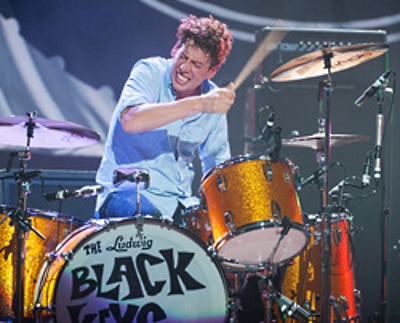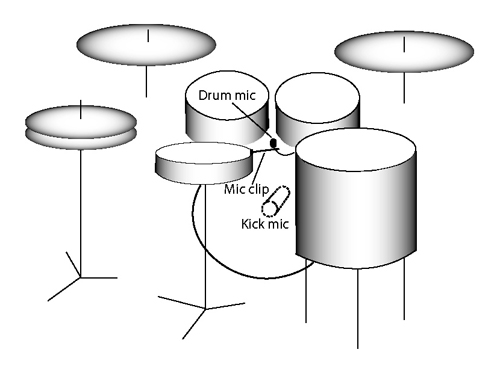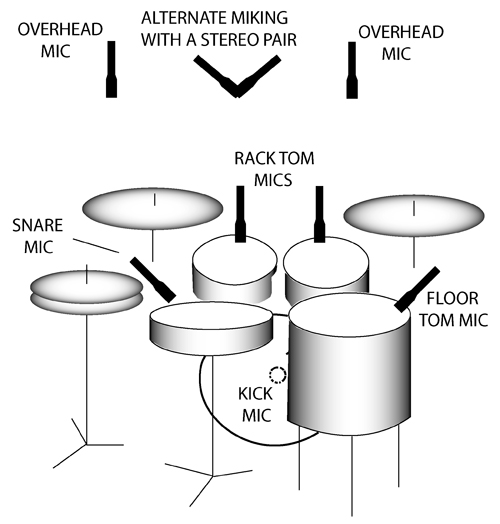
When lowering the overhead mics, exercise caution or the cymbals can easily become too loud.
Another approach is to place the mics near each side of the drummer’s head, so that they “hear” the kit in stereo pretty much as the drummer hears it.
Apply EQ as needed to compensate for Fletcher-Munson loudness contours (how the ear hears different frequencies at different levels).
A nifty “minimalist” technique that can work with a small kit is clipping a mini omnidirectional condenser mic to the right side of the snare drum rim, a few inches over the rim, over the drummer’s knee (Figure 2). It will pick up the snare, toms and cymbals all around it.
The resulting sound is tight and full, somewhat like that of multiple mics.
To adjust the balance among the drum-kit parts, position the mic toward or away from the toms, and raise or lower the cymbals.
The single-omni method limits what can be done with EQ. Boosting the higher frequencies (2 kHz and up) to bring out the toms’ attack can add an unwanted harsh or metallic effect to the cymbals. It’s better to use subtractive EQ in the low frequencies, roughly 100 Hz for the toms and 200 Hz for the snare.
Mic Multiplicity
With a multiple-mic approach (Figure 3), one mic is placed close to each drum and cymbal. That provides extra control of the EQ and effects for each drum independent of the others, resulting in a tighter, more present sound.
Toms, in particular, benefit from individual miking, for a richer and more distinctive sound. Multiple miking is the norm for rock and fusion.
A common snare mic is a cardioid dynamic type with a presence peak in the frequency response, such as the Shure SM57 or Beta 57A. Bring the mic in from the front of the set on a boom and place it a couple inches over the rim aiming at the center of the head.
The sound will be full with the mic near the top head, and thins out and becomes brighter as you move the mic toward the rim and down the side of the drum.
Some engineers like to mike the snare drum top and bottom. If this approach is taken, reverse the polarity of the bottom mic to prevent phase cancellations. The bottom (snare) head moves out when the top (batter) head moves in, so the heads are in opposite polarity and can cancel out each other’s sound if you mix their signals.
Some snare drums make an ugly ringing sound at a particular frequency. To eliminate it with EQ, insert a high-Q, narrow peak in the 200 Hz to 600 Hz range. Sweep the frequency up and down until you exaggerate the ring frequency, then apply cut.


